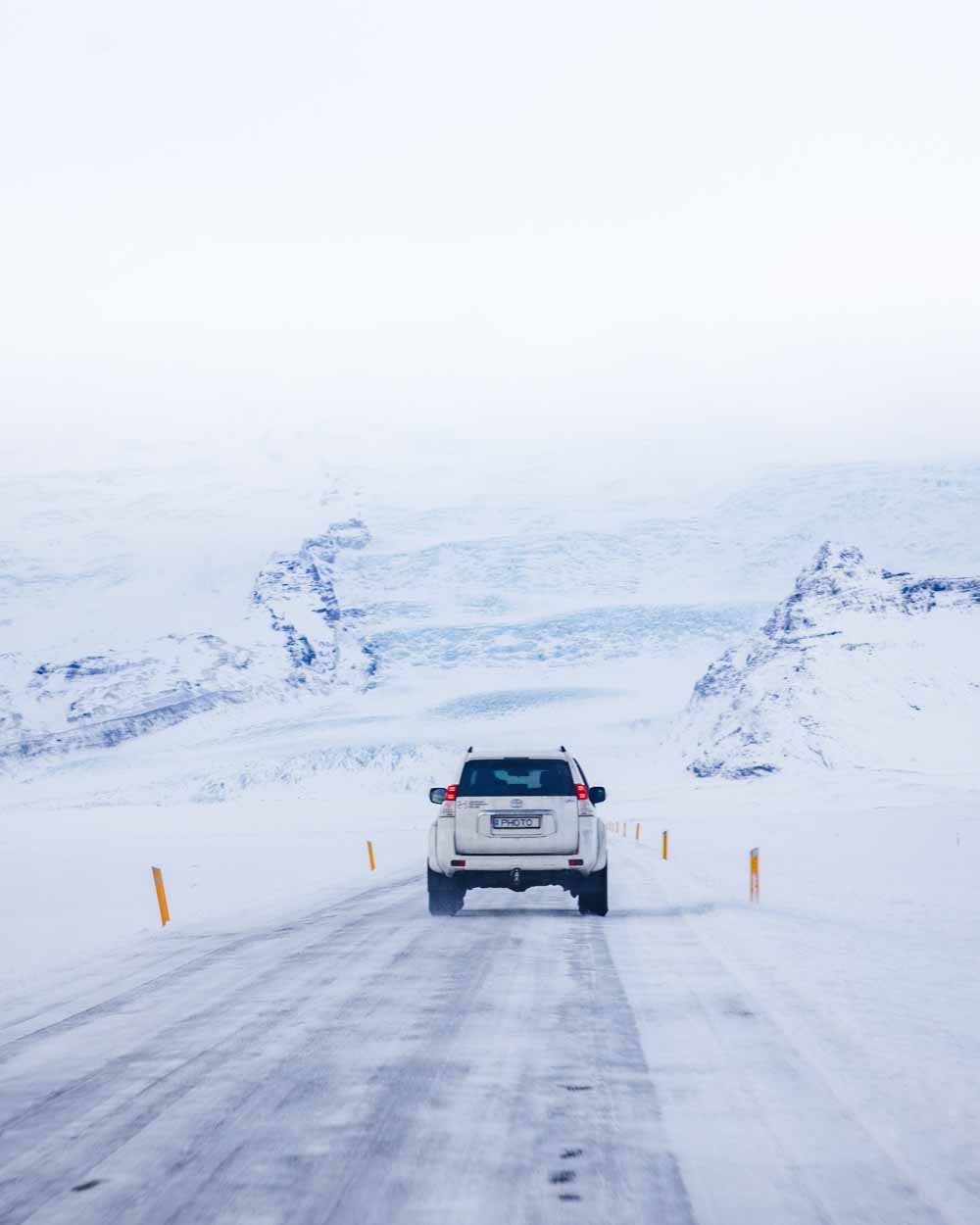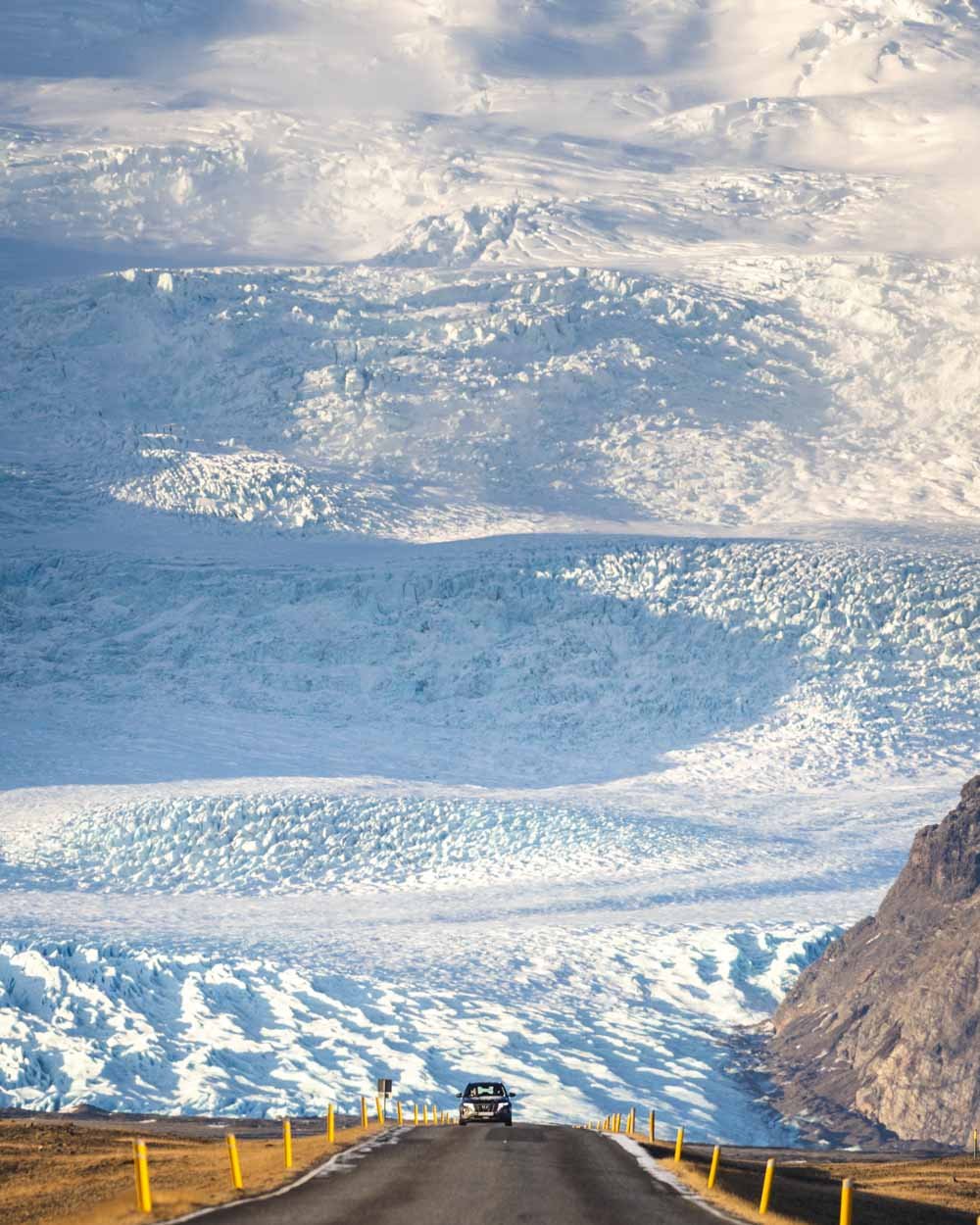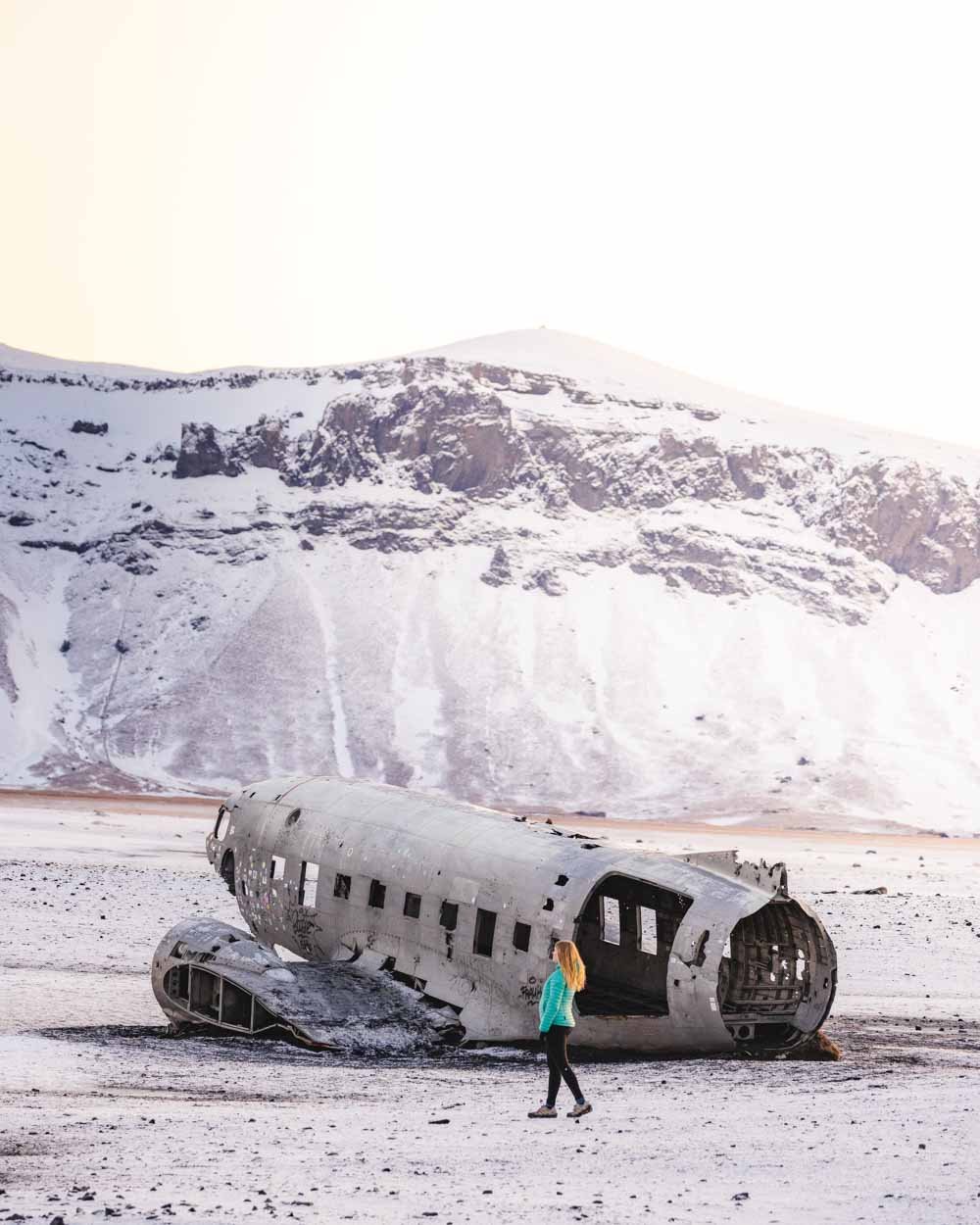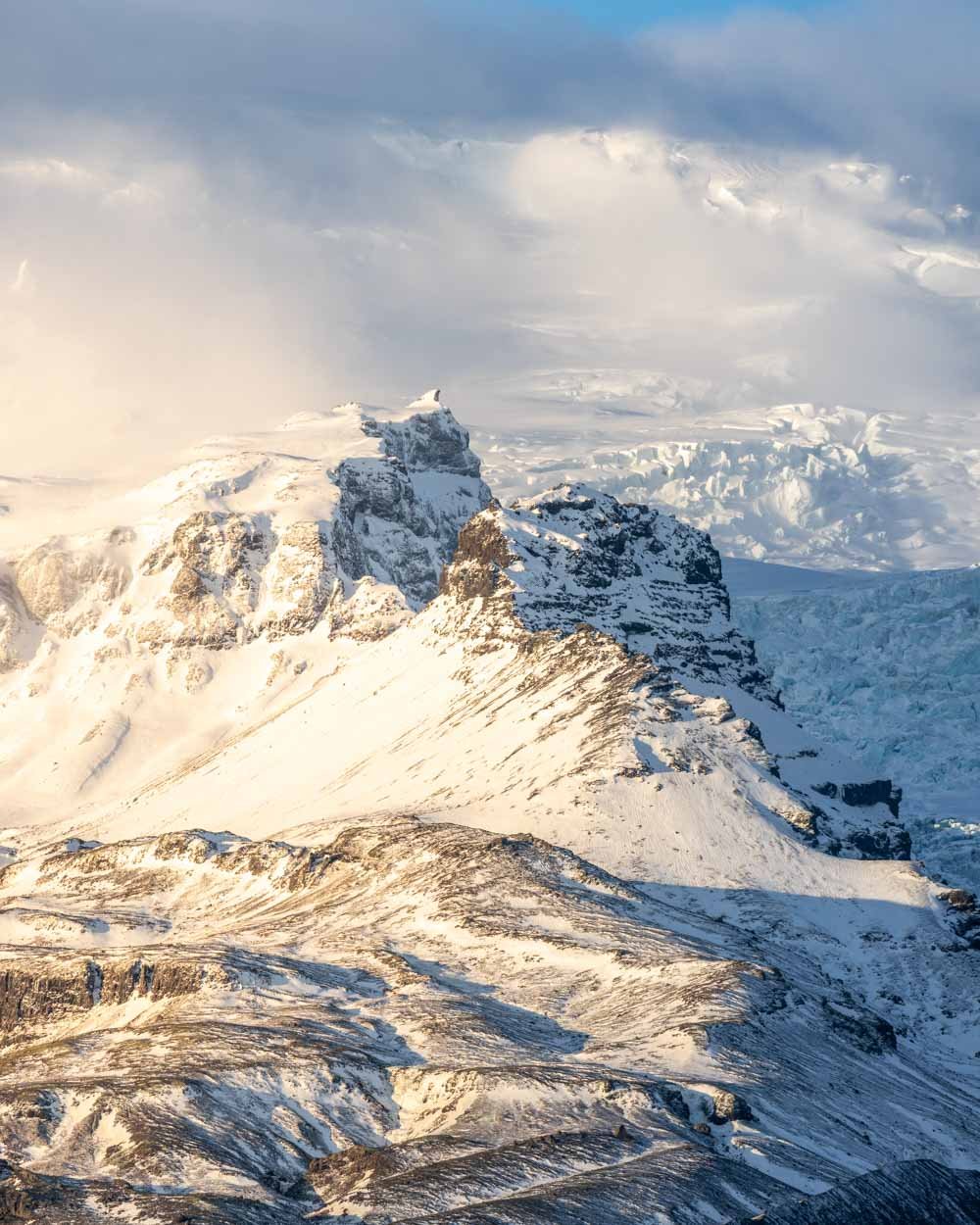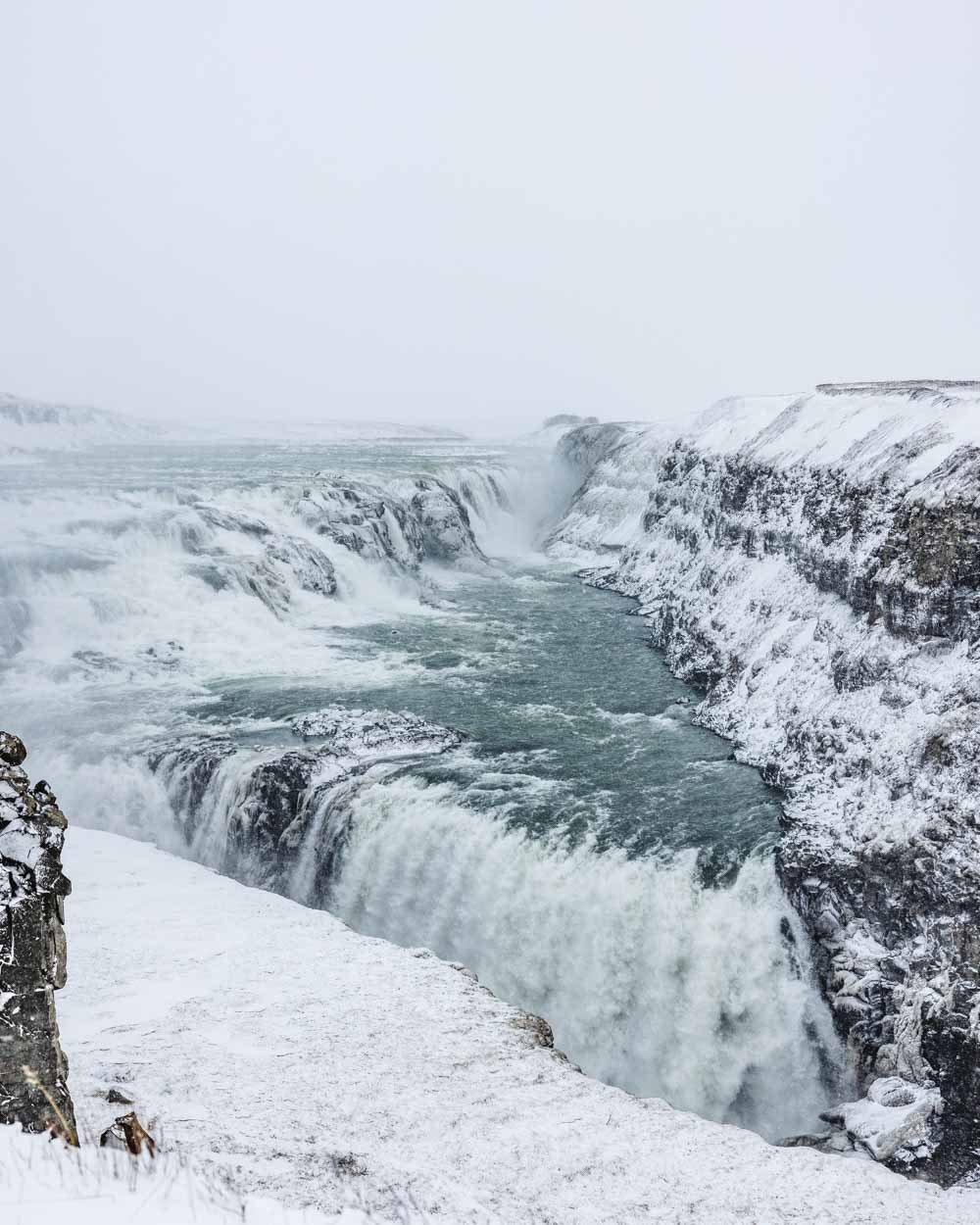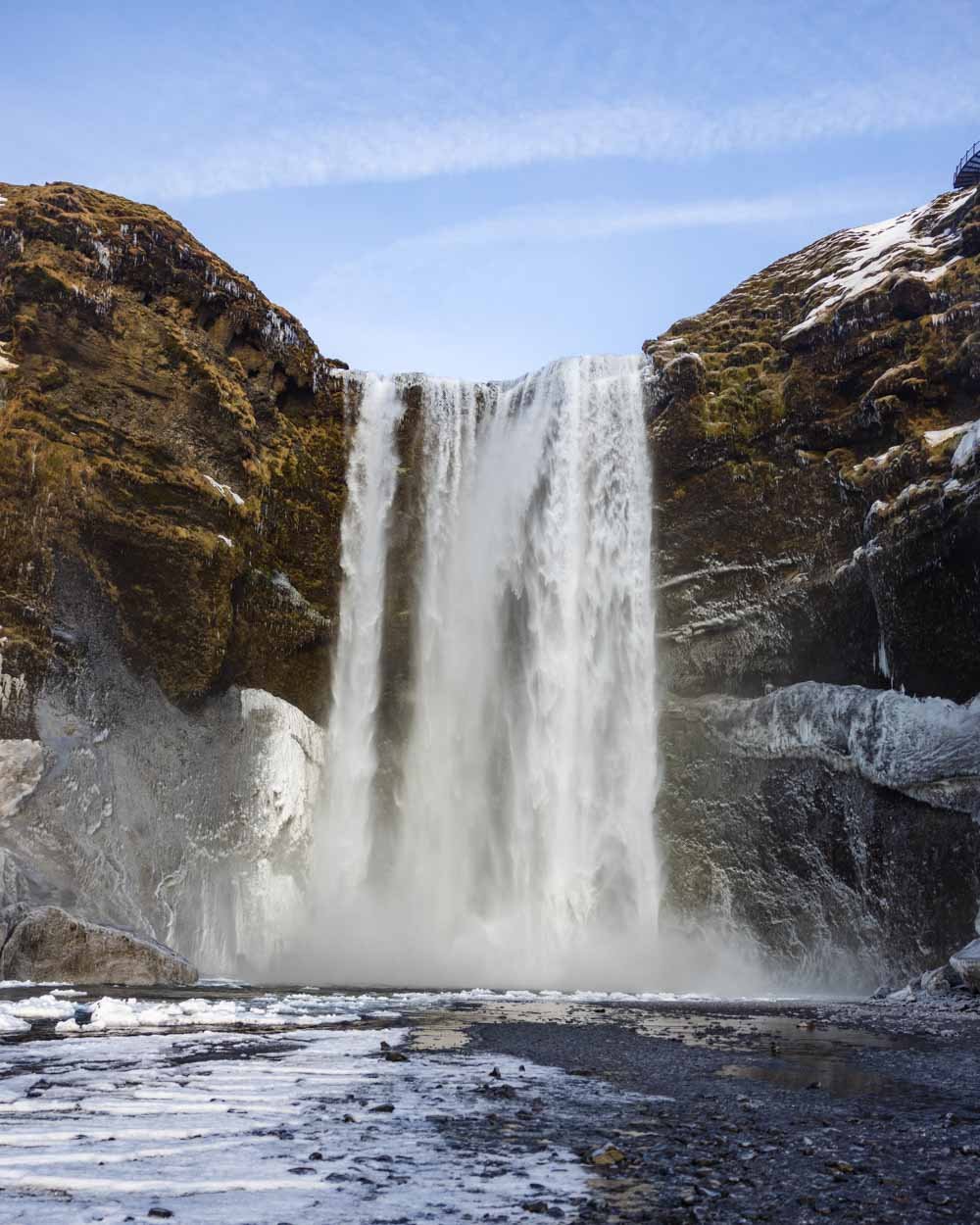Iceland in winter is a magical place. You’ll find the same huge waterfalls and epic mountain landscapes, but everything looks even more special when covered with a thick layer of snow. Prices are lower, so your money will go a lot further, which is a big bonus in a country as expensive as Iceland.
However, a winter trip here is definitely not all sunshine and rainbows, although we did see both on our trip! Unless you’re very lucky you’ll likely experience some of Iceland’s famous stormy conditions.
This can be exciting if you’re all cosied up inside, but it can be pretty wild if you're outside exploring. Nevertheless if you know what to expect and are prepared to be flexible, you can have an incredible time during Iceland’s polar nights.
Here’s everything you need to know to decide if Iceland in winter is right for you, and tips to plan your trip to perfection.
Things to know before visiting Iceland in winter
1. There are fewer visitors but things still get crowded
There are far fewer tourists visiting Iceland in winter, so you might have visions of getting some of the most popular places in Iceland to yourself.
Despite the lower tourist numbers, if you’re planning to visit hot spots such as the Golden Circle and major sights in the south coast like Skogafoss and Vik, then you might be in for a rude shock. I know we were!
The trouble is that though there are less people visiting the sites in general, you are all condensed into the short daylight hours. There’s no midnight sun to save you now! Normally we’re all about avoiding the crowds, but that is pretty difficult during winter.
You can try and aim for sunrise, which worked for us once when we were visiting the Solheimasandur plane wreck as that involved a 4km walk - which people didn’t want to do in the dark. But otherwise as sunrise is generally after 10am, most people are already up and out!
2. The weather is every bit as unpredictable as you might have heard…
You could get lucky and have glorious weather during your trip, but most likely you’ll be hit with some pretty changeable conditions. We were in Iceland for 11 days and only 2 of those were sunny. The majority were either rainy, windy as all hell, or snow storms.
Now I think we did get a bit unlucky, but you have to be prepared that unless you are very fortunate, not every day will be a day you can get out and explore.
The weather can make exploring difficult with road closures, and unsafe driving conditions, but if you’re inside and cosy then it’s really quite something to watch!
It’s definitely the wildest weather we’ve ever experienced and not something we’ll ever forget!
3. But a road trip is still very much doable
However, don’t let it put you off a road trip. If you’re a confident driver (you don’t need to be experienced in winter driving) then hiring a car will still be the best way to get around. Iceland has a fantastic road safety website which allows you to stay completely up to date with all the latest conditions and what to expect.
There are almost always gaps in the bad weather, which means you can avoid driving in the worst conditions and plan your journeys around decent weather windows. And as mentioned, you might get lucky and have great conditions anyway - it was apparently glorious for the two weeks before we arrived!
Having a car meant we had complete control and flexibility over our itinerary and it allowed us to see so much more. Not to mention that the roads themselves were pretty beautiful when they weren’t shrouded in fog, and we absolutely loved our road trip adventure.
We have loads of tips on what to expect from driving in Iceland in winter here.
4. Hotels and car hire are so much more affordable
This is the one of the best perks of travelling Iceland in winter! The hotels and car hire prices are so much cheaper.
We’d looked at booking two trips to Iceland in the past, in both June and September, and the hotel prices were pretty shocking. In winter we were able to stay at some truly fantastic hotels for around 1/3 of the price that they’d been in peak season.
This is especially beneficial in winter because if you do get caught out with bad weather, it makes all the difference to have nice places to retreat to.
Car hire is also really affordable. We hired a 4WD which was fantastic, and it only cost USD $31 a day. Whilst we didn’t technically need a 4WD, we were very grateful to have one, and it definitely made windy and icy roads feel much safer.
5. You can be far more last minute about making bookings
Due to the lower visitor numbers you can book things much more last minute. If you hold your nerve you can make hotel bookings when you can see the weather ahead. We did this for one of our stops and wished we’d done it for each one, as we could have avoided some of the worst weather.
But it’s not just about hotel bookings, you can also get into places like the Blue Lagoon without having to book weeks in advance. We booked our time slot the night before.
However I would recommend booking the Blue Lagoon a bit earlier than we did, just in case it’s busier for you than it was for us.
But for context, we booked the night before, which happened to be a day the lagoon had been closed due to high winds, so anyone that could move their reservation to the next day would have done so, and despite that, we still got in!
We also booked our ice cave tour the day before, but I don’t recommend doing that as sometimes they do sell out, so give that one a little more leeway.
6. You’ll want to bring traction devices
Assuming you’re not sticking solely to Reykjavík, I’d recommend bringing traction devices for your shoes. Whilst you may get lucky with conditions, we were personally hit with ice at almost every spot we visited.
If it’s been really wet the ice can get washed away and you won’t have trouble, but we were really grateful to have our Yaktrax with us.
We actually didn’t see anyone else with them and we saw quite a few people either slip over, or nearly fall at various different sites.
The other benefit to having traction devices with you is not just that you can walk over ice really easily, but also you can walk over areas that most people can’t.
We were able to get photos at Skogafoss without anyone in them purely because we could get in front of the crowds, who couldn’t walk across the ice.
You can check out Yaktrax on either Amazon or REI. We recommend getting the heavy duty ones, as they will last longer than the standard rubber ones. The rubber ones will do the job just fine, but we tend to break them more easily.
7. You can visit otherworldly ice caves
Possibly our favourite Icelandic experience was visiting the spectacular Crystal Cave.
In fact, it was so stunning that had we not have been hit with severe storms in the following days, we would have gone to visit a second cave! I’d always wondered whether photos I’d seen of the caves had been photoshopped. They haven’t.
The ice really is that blue! It’s an otherworldly experience to see it with your own eyes.
If you do want to visit an ice cave, definitely book as early into your trip as possible. We saw lots of people miss out when roads were closed and they had to cancel their trip.
The ice caves tend to be accessible between mid October and the end of March, but sometimes the season can run into April.
8. The landscape is like a magical winter wonderland….
The scenery in Iceland at this time of year is a proper winter wonderland. It’s absolutely magical and made the drives extra special.
There were many landscapes where I thought the snow made them even more beautiful than they would be in the warmer months, especially places like Thingvellir National Park and the Solheimasandur plane wreck.
One thing to note though is that heavy rains will wash away snow, so you won’t always get lucky, but for us personally, it was snowy almost every single day.
9. But many things are inaccessible
This is one major downside to visiting Iceland in winter. All F roads are closed and many sites are inaccessible. If this is your one trip to Iceland and you have a long list of must see spots, then a winter trip may not be for you.
I’d say winter in Iceland is better suited to those who haven’t been before (like us) and want to do some of the really touristy things like the Golden Circle, Skogafoss waterfall and Vik.
It would also be good for people who’ve been to Iceland before, already seen a lot and want to see some of the sites in wintery conditions.
If you’re hoping to do major hiking, or any of the waterfalls and hot springs located along F roads, it’s not going to be a good time to visit.
10. The northern lights are not a given
I know Iceland is notorious for cloudy skies, but I have to admit with 11 nights I really thought we’d see the northern lights. But alas we didn’t. We had two clear nights, but both coincided with very low solar activity.
There was one night where the camera could pick up very faint light, but you couldn’t see it with your eyes. Any nights with higher solar flares were 100% overcast, so you couldn’t see the lights.
It’s not to say you won’t see them, the week before we arrived they were seen for several nights in a row, but it’s best to manage your expectations.
The slight Northern Lights we saw
If you want your best chance of seeing the lights then use this app to check for solar activity and this website to check for gaps in the cloud (counter intuitively, green = cloud, white = no cloud).
Whilst you have a better chance of seeing the lights with a tour guide, the tours are expensive and sometimes have you out until 2am, and you might not even see them (we met many people this had happened to!).
It’s probably best to check the weather and solar activity for yourself and then book a tour for a night that looks promising if you don’t want to search independently.
11. Winter conditions last longer than you might think
Although winter is technically from December to February, winter conditions in Iceland last for much longer than this. It can start to get wintery as early as October and can last through to March, and sometimes even beyond.
F roads are generally only open from June to the end of September. This means that whilst your trip might not technically fall in winter, you can still be hit with similar issues.
Although big snow storms can occur at any time, the wettest months in Iceland tend to be January and February, and as these tend to be quite cold months too, a lot of that rain can fall as snow.
Although, as this is Iceland, you can never really predict the weather, so the best thing to do is be prepared that you might encounter storms and then you can be pleasantly surprised if you don’t.
12. Daylight hours vary hugely throughout the season
The thing that worried me about visiting Iceland in winter was the lack of daylight hours. But how much this affects your trip will depend on which month you visit.
For example, in early January there are around five hours of daylight, but by the end of the month it’s up to seven. You can see how much light you’ll have day by day on this website which can help you plan the month you want to visit, or even which part of the month.
It’s worth noting that we were surprised to find that during our visit in January it started to get light almost an hour before sunrise, so we would often use that time to drive to our destination ready for sunrise itself, which helped us make the most of the limited daylight.
13. You’ll want flexibility as things can get cancelled
If you have your heart set on certain activities, then I’d recommend trying to do them as early as possible in your trip. As we mentioned earlier we saw people miss both the ice caves and the Blue Lagoon due to closures because of the snow storms.
Aim to do the things you have your heart set on as early as possible, and preferably build some extra time into your itinerary to allow for cancellations. We were grateful for extra days that meant we could reschedule things when we got hit by a huge storm.
It’s also worth noting that every single hotel reservation we had to move (all of which were non refundable) did so happily without charge. Icelander’s are really friendly and used to weather disruptions, so if they can help you out and rearrange things they will.
This post may contain affiliate links, meaning at no additional cost to you, that we will earn a small commission if you click through and decide to make a purchase. This helps towards the costs of running our website. Thanks for your support.



